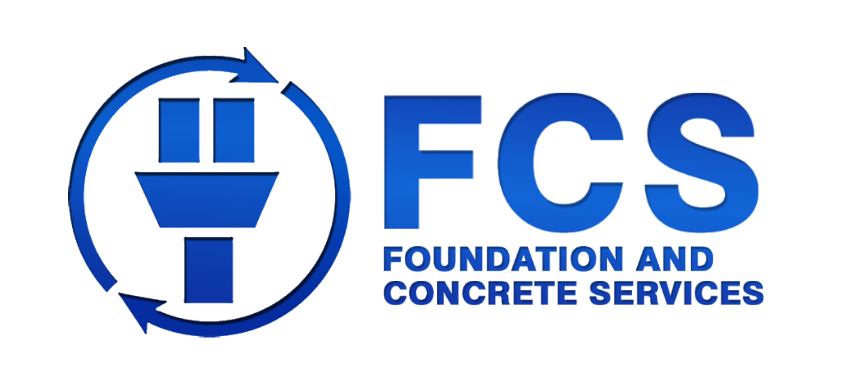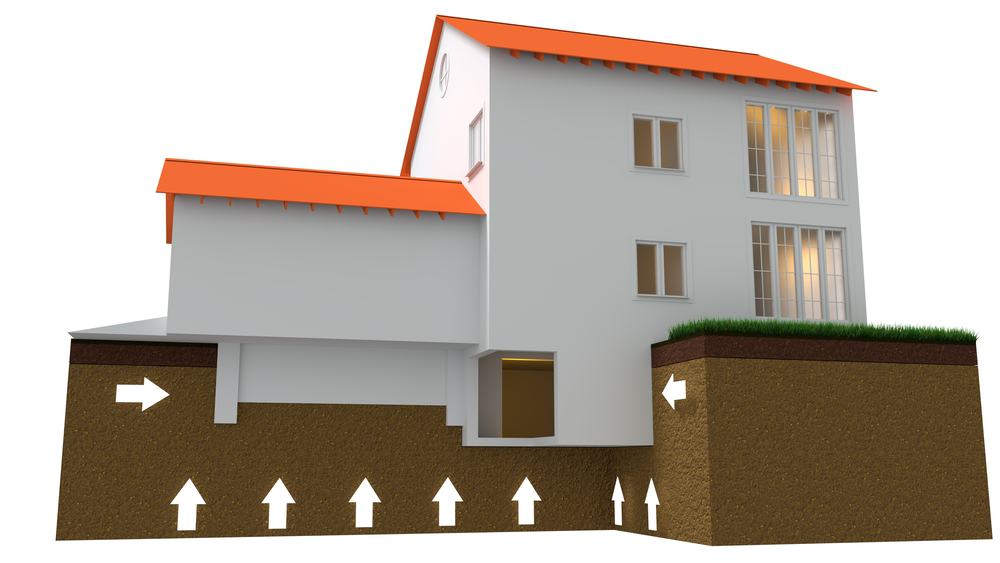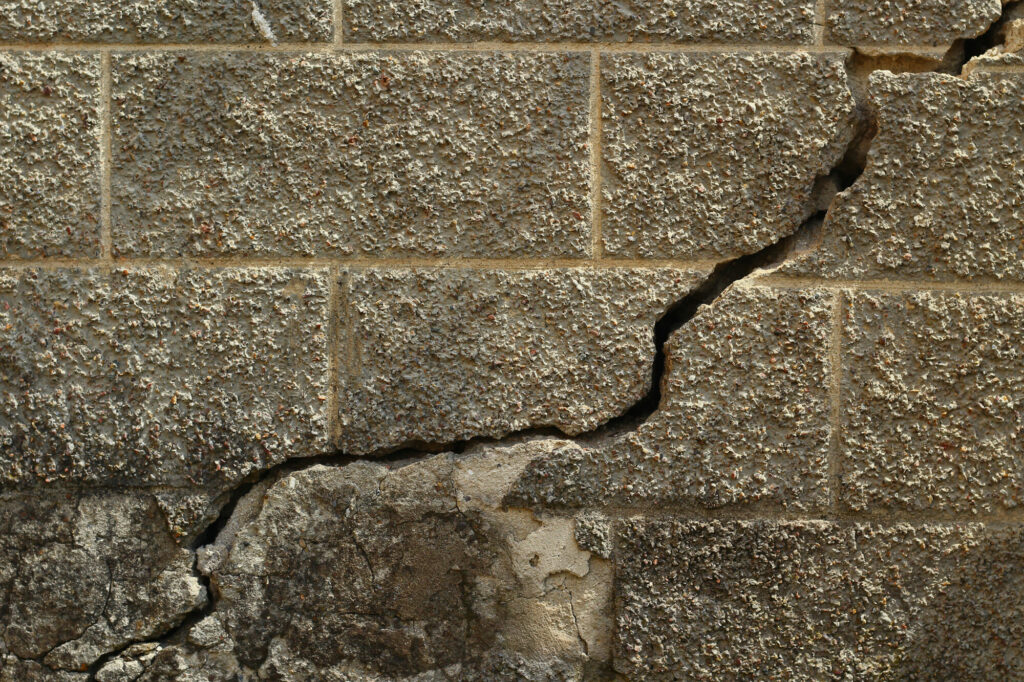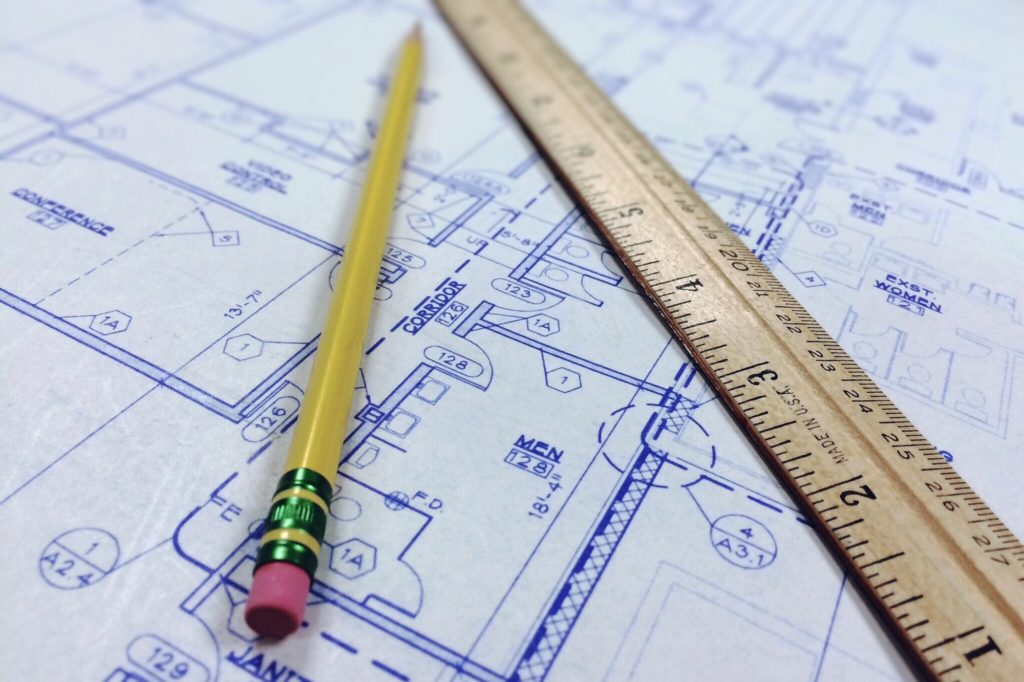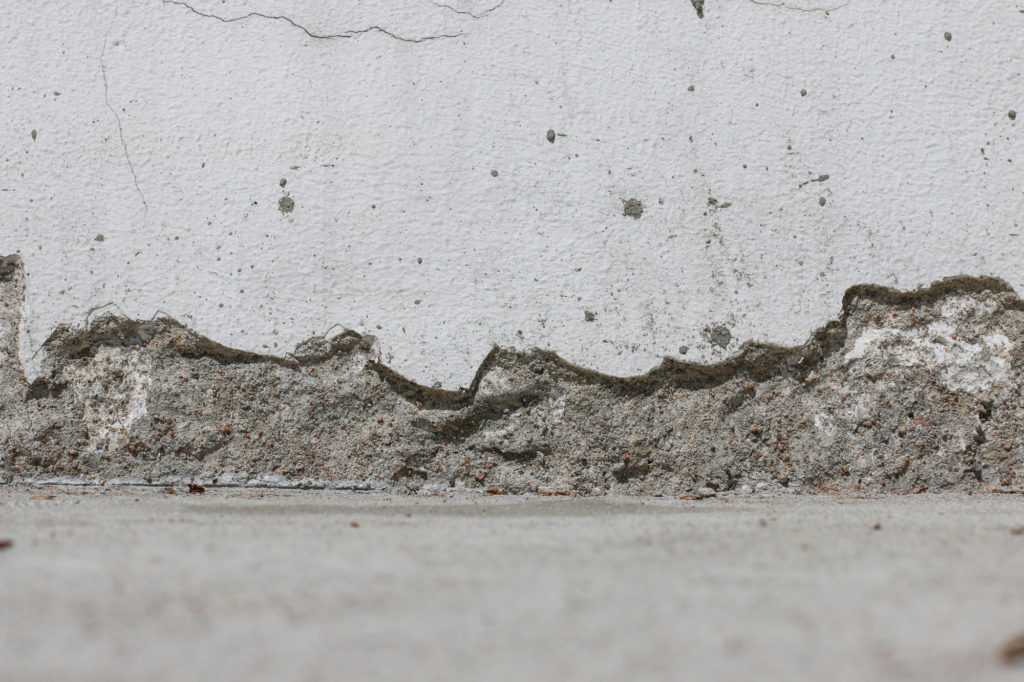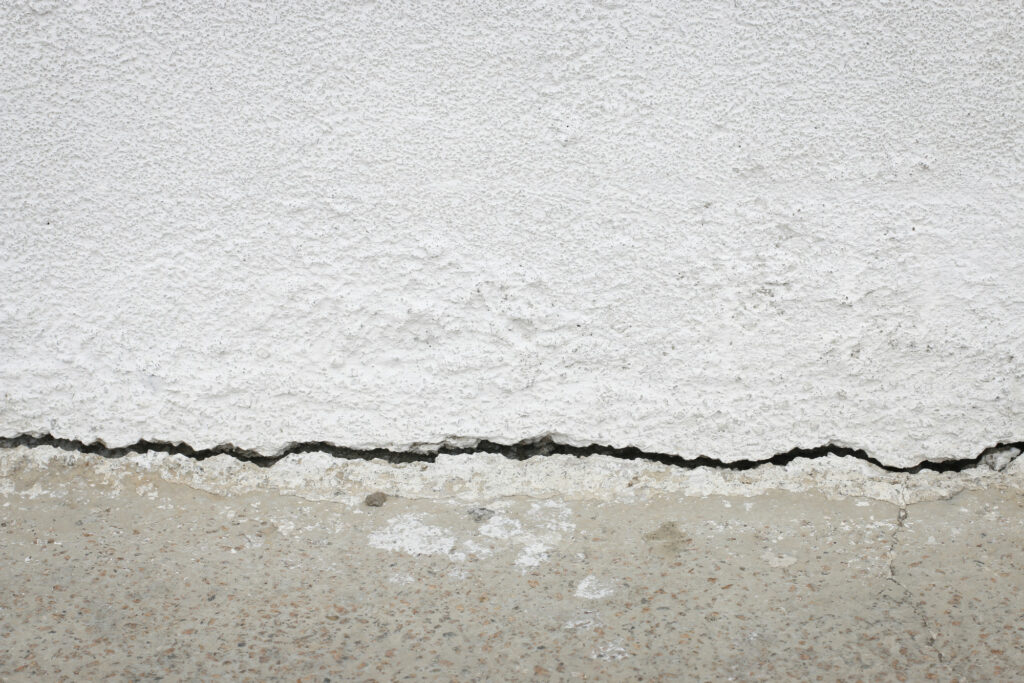Understanding Foundation Heaving
Foundation heaving refers to the upward movement of a building’s foundation, which is more common in concrete slab foundations. This phenomenon occurs when the supporting soil beneath the foundation expands and contracts in response to changes in ground moisture levels. Typically manifesting as:
- Cracks in walls and flooring
- Doors and windows that jam or fail to open properly
- Sloping or Uneven floors
Foundation upheaval is distinct from foundation settlement, which is the downward movement of a foundation. Heaving exerts an upward force, potentially leading to structural damage.
Fortunately, this problem is often correctable. Solutions focus on:
- Identifying and mitigating the source of excess moisture
- Stabilizing and reinforcing the soil
- Adjusting the foundation to its original level
Proactive measures are advised to address the early signs of foundation heave. These include monitoring for new or widening cracks in the structure or difficulty operating doors and windows to prevent significant structural issues.
Contact FCS Foundation Repair today for your Foundation Heaving Repair.
What Is Foundation Heaving?
Regarding foundation issues, one problem that many people need to recognize by name is heaving. But what exactly is foundation heaving? Although heaving can happen to any foundation, it’s much more familiar with concrete slab foundations.
As homeowners, we’ve seen the damage foundation heaving can cause firsthand. The soil underneath a foundation can expand and contract based on the ground’s moisture. When the soil swells, it causes the foundation to lift unevenly. This results in cracks in walls and floors, doors and windows that stick or won’t open, and uneven or sloping floors.
Causes of Foundation Heaving
Foundation heaving occurs when the underlying soil expands, exerting an upward force on a building’s base. This condition often affects concrete slabs and can arise from several factors:
- Excessive Moisture: Different types of Soils, especially those with high clay content, tend to swell due to excessive moisture. This expansion can come from heavy rains, faulty gutters, or poor drainage systems allowing water buildup. Clay particles absorb water as moisture infiltrates, causing a significant volume increase and exerting upward pressure on the foundation.
- Plant Growth: Root systems of trees and large plants seek moisture and nutrients, potentially encroaching beneath foundations. Over time, expanding tree roots can disrupt the surrounding soil and physically lift the foundation from below.
- Climatic Variation: The freeze-thaw cycle can induce foundation heaving in colder regions. When temperatures drop below the frost line, water in the soil freezes, expands, and pushes against the foundation. Repeated cycles worsen the displacement.
- Expanding Soil Composition: Foundations resting on soils with high expansivity, such as clay soils, are vulnerable to heaving. The soil’s propensity to absorb water and expand during wet spells, followed by contraction during dry periods, creates a fluctuating environment that disturbs the foundation’s stability.
Maintaining moisture balance is critical to deter the risk of heaving. Ensuring proper drainage away from the foundation is essential, incorporating measures such as effective gutter systems and strategic landscaping. Pinning with piers may correct and stabilize the affected foundation when heaving occurs. Regular monitoring and proactive maintenance can prevent the long-term structural damages often associated with foundation heaving.
Indicators of Potential Foundation Heave Complications
Visual Evidence of Structural Tension
As the ground shifts beneath a house, one of the most noticeable indicators can be the appearance of fissures within interior and exterior walls and the ceiling. These wall cracks generally manifest in a diagonal pattern around doorways and window frames. They don’t remain static; instead, they widen and extend over time, which reflects the persistent movement of the foundation.
Resistance in Doors and Windows
A foundation heaving typically leads to irregular movement within the structure’s base, causing door and window frames to warp. As a result, doors and windows that once opened with ease might now present problems closing properly or may stick, suggesting the need for a thorough foundation evaluation.
Disparities in Flooring
When a foundation wall experiences upheaval, one of the common problems is a disruption in the uniformity of floor slabs. You might notice the floor has a noticeable tilt, or parts of the floor may feel unstable. A spongy sensation when walking across the floor or visible sloping strongly indicates underlying foundation issues.
Disturbances in Plumbing
Plumbing complications can arise when foundation shifts exert undue pressure on pipelines. These issues may present as unexpected clogs, diminished water pressure, or unexplained leaks. Encountering new plumbing issues can be indicative of deeper foundation problems. If these problems suddenly emerge, seeking plumbing and foundation professional evaluations is often beneficial for plumbing and foundation.
It’s essential to approach the early signs of foundation heave with a clear understanding that these manifestations are not static. They typically evolve and could signify more significant, impending issues with the entire structure. A proactive stance in addressing any signs can be critical in mitigating the extensive damage that might otherwise occur due to foundation movement. Consulting with specialists who recognize these symptoms can prevent further damage to your home’s foundation.
Risks of Overlooking Foundation Uplift
Consequences for Structural Integrity
Foundation uplift jeopardizes the soundness of a home. Irregular lifting of the foundation results in fractures across walls and flooring, with the potential for doors and windows to become misaligned. Significant structural damage may occur in extreme scenarios, leading to a compromised structure.
- Cracks and fractures in walls and flooring
- Misalignment of doors and windows
- Severe heave damage affecting structural stability
Plumbing and Wiring Complications
With the movement of a house’s foundation, pipelines and electrical systems suffer. Plumbing lines could warp, triggering leaks or ruptures, while electrical connections may loosen or snap, leading to potential fire risks.
- Twisting and breakage of plumbing lines
- Disconnection or tearing of electrical wiring
- Hidden damages causing water problems and fire hazards
Hazards to Health and Safety
A shifting foundation induces various hazards. Uneven surfaces can be tripping hazards, while dampness from water damage may encourage mold growth, impairing respiratory health. The risk of gas leakage and fires increases with severe damage to gas pipes or heating systems.
- Trips and falls due to uneven flooring
- Mold growth from water ingress
- Risks of gas leaks and fire
- Underground water line leaks
Financial Impact of Delayed Repairs
Delaying remediation for foundation uplift leads to exorbitant expenses. Initial repair estimates might start from thousands of dollars, escalating with the extent of destruction. Early intervention is crucial to prevent rising costs and preserve proper drainage to avoid serious heave damage.
- Extensive damage leading to costs between $10,000 to $100,000+
- Importance of addressing foundation concerns early to contain costs
- Necessity of proper drainage systems to prevent too little drainage and subsequent damage
Repairing a Heaved Foundation
Recognizing the Issue
To begin addressing a foundation shift, it’s crucial to assess the extent of the heave by a visual check for specific indicators. Look for fractures in walls, uneven floors, and malfunctioning doors and windows, as these symptoms suggest the base has shifted, compromising the structure it supports.
Stabilizing the Base
Creating a strategy to underpin and realign the foundation is vital, frequently employing helical piers around the periphery and hydraulic jacks for gradual elevation and leveling. During the lift, gaps beneath are filled with concrete to solidify the soil permanently.
Securing and Aligning the Structure
Following the foundation’s alignment, the focus shifts to ensuring that walls and floors are level and stable. This might involve installing braces, anchors, and beams for additional security. Additionally, reinforcing floor joists and supports is critical to avoid future deformities.
Ensuring Long-lasting Stability
The objective is to implement a lasting resolution to halt additional upheaval. For comprehensive stability, steel piers are driven into the ground, reaching the stable soil below the frost line, ideally anchoring into bedrock. Concrete applied underneath the base averts erosion. Upon securement, subsequent repairs can be made to the structural surfaces impacted.
Securing a seasoned foundation specialist is paramount in remedying a heaved base, as their expertise ensures a thorough assessment, an efficient repair regimen, and a steadfast solution to restore peace of mind within your residence.
Conclusion
Recognizing the importance of a stable foundation is crucial for maintaining a home’s safety and longevity. The timely identification and remediation of foundation heaving—often an unfamiliar issue—can prevent further structural damage. Homeowners are advised to conduct periodic inspections for early detection of this condition. Proactive measures include looking for signs like difficulty in operating doors or the emergence of cracks. If these symptoms are present, it is highly advised to seek expert assessment promptly. Such actions ensure that homes remain secure, averting the risks associated with foundation heaving.
Causes of Foundation Heaving
Regarding foundation issues, we’re all familiar with settlement or cracks, but heaving is another problem many homeowners don’t recognize. What exactly is foundation heaving? Although any foundation can heave, concrete slabs are particularly prone to this issue.
Heaving happens when the soil underneath a foundation swells, pushing up on the foundation. This swelling is often caused by increased moisture in the soil. There are a few common culprits:
•Poor drainage – The soil can become saturated if water can’t correctly drain away from the foundation. This excess moisture causes the soil particles to expand, lifting the foundation.
•Tree roots – As trees grow, their roots expand in search of water and nutrients. These roots can make their way under foundations; they lift from below as they thicken.
•Frost heave – In colder climates, the soil expands and contracts as the ground freezes and thaws. This movement can raise foundations, especially along the edges.
•Expansive clay soils – Certain types of clay soils are prone to swelling when wet and shrinking when dry. Foundations built on these unstable soils are at high risk of heaving.
The effects of heaving can range from minor cosmetic issues to significant structural damage. Doors and windows may stick or no longer open properly. Cracks can form in walls and floors. Heaving can severely undermine the foundation, causing portions to collapse.
The key to preventing and repairing heaving is controlling moisture and promoting drainage. Installing gutters, downspouts, and proper grading are reasonable first steps. For existing heave, foundation piers or helical piers are often used to stabilize and lift foundations back to level. The moral of the story? Don’t take your foundation for granted!
Signs You May Have a Foundation Heaving Problem
Cracks in Walls and Ceilings
If you start noticing cracks in your walls and ceilings, your foundation could be heaving. We know cracks happen in houses, but foundation heaving causes cracks that get progressively larger over time. Check if the cracks follow the lines of windows and doors or run diagonally. Foundation issues are more likely to cause diagonal cracks. Measure the cracks to see if they’re getting bigger, which shows ongoing movement.
Doors and Windows Sticking
When your foundation moves unevenly, it can cause the frames of doors and windows to bend, making them hard to open or close. We had a stuck sliding glass door that we could barely pry open. If doors and windows that used to open smoothly are now sticking or won’t close all the way, it’s time to inspect the foundation.
Uneven Floors
Foundation heaving can make floors uneven, causing them to slope or become bumpy. Check if the floor feels spongy or unstable underfoot. Look for areas where floors used to be level but now slope visibly. Uneven floors often mean the foundation has settled in some spots more than others, signaling foundation problems that will worsen if left unaddressed.
Plumbing Issues
As the foundation shifts, it can stress plumbing pipes that run under and through it. This may lead to leaks, clogs, or water pressure problems. We started noticing our toilets were flushing slowly, and drains were gurgling. If you experience plumbing issues that have arisen out of the blue, foundation heaving could be the culprit. Having a plumber and foundation expert evaluate what’s happening is best.
The warning signs of foundation heaving are often subtle initially but become more apparent over time. Paying attention to changes in your home and addressing issues early on can help minimize damage from foundation heaving. It’s always a good idea to consult an expert if you suspect problems with your foundation.
The Dangers of Ignoring Foundation Heave
As homeowners, we have to consider foundation heaving seriously. If left unaddressed, the damage can be severe, and the repair costs substantial.
Structural Damage
The most dangerous aspect of foundation heave is the potential for structural damage to our home. As the foundation shifts and settles unevenly, cracks begin to form in walls and floors. Doors and windows may start to stick or need to be fixed. In severe cases, heaving can cause entire sections of the foundation to break apart, compromising the stability of the whole house.
Plumbing and Electrical Issues
Foundation movement also frequently causes damage to plumbing and electrical systems. As pipes twist and bend, they can start to leak or break. Electrical wiring may become detached or torn, creating fire hazards. These types of damage often remain hidden within walls and floors until significant problems arise.
Health and Safety Risks
Heaving foundations pose risks beyond just structural damage. Uneven floors can lead to trips and falls, especially for older adults or small children. Exposure to mold from water damage threatens respiratory health. Damage to natural gas lines or furnaces caused by foundation shifting creates gas leaks, fire, or carbon monoxide poisoning risks.
Costly Repairs
The costs to repair damage from foundation heave can be staggering, ranging from $10,000 to $100,000 or more, depending on the severity. The longer we ignore the signs of foundation movement, the more substantial the damage will likely become and the higher the repair costs. We must address any issues with foundation heave as soon as possible to minimize future expenditures and risks.
In summary, we can’t afford to ignore the dangers of foundation heaving. Our homes, health, and safety depend on stable, solid foundations—and maintaining them should be a top priority for all of us.
How to Repair a Heaved Foundation
Identifying the Problem
The first step in repairing a heaved foundation is determining how severe the damage is. We’ll evaluate the foundation by conducting a visual inspection. We check for cracks in walls, sloping or buckling floors, doors, and windows that don’t open properly. These are signs that your foundation has moved unevenly, damaging the structure above.
Stabilizing the Foundation
Once we’ve assessed the problem, we develop a repair plan to stabilize and lift the foundation. This typically involves installing steel piers along the perimeter of the foundation and hydraulic jacks to lift and level the foundation slowly. As the jacks lift the foundation, we fill the void beneath with concrete to stabilize the soil permanently.
Leveling and Securing the Structure
Lifting the foundation is only half the battle. Next, we ensure the walls and floors above are level and structurally sound. We may need to install wall braces, anchors, and beams to secure the structure before lifting begins appropriately. Floor joists and supports are also reinforced to prevent buckling.
A Permanent Solution
Foundation heaving repair takes a lot of work. We aim to provide a permanent solution to prevent future movement and damage. Steel piers are driven deep into stable soil below the frost line, anchored in bedrock when possible. Concrete fill beneath the foundation helps prevent washout. Stabilizing, securing, and lifting the foundation, cracks in walls and floors can be repaired to restore structural integrity.
While heaving foundation repair is complex, choosing an experienced contractor is the most critical first step. We have the expertise, equipment, and capabilities to assess the damage, develop a comprehensive repair plan, and permanently stabilize your foundation. With the problem solved at its source, you can feel at ease in your home again.
Conclusion
Foundation heaving can be serious business. While many of us have never even heard the term before, it’s a problem that can threaten the stability and safety of our homes if left unaddressed. Now that you know what to look for and understand the causes, you’ll be better equipped to spot the early signs of foundation heaving and take action. Don’t wait until doors stop closing or cracks start spreading – check in on your foundation regularly and call for professional help immediately if needed. Our homes are too essential to ignore, so stay vigilant and don’t let the silent menace of foundation heaving sneak up on you!

